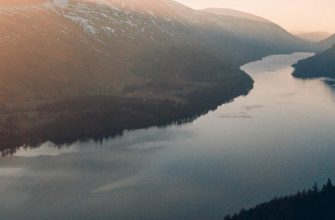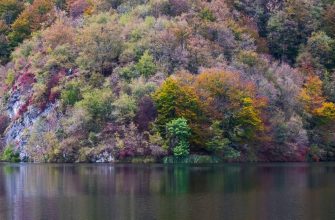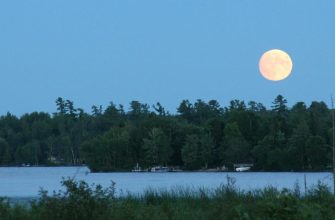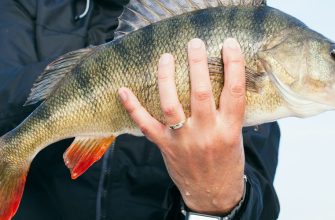- Top 3 Best Bass Fishing Lakes in Texas:
- Lake Fork – A Bass Fishing Paradise
- Lake Overview
- Bass Species
- Hot Spots for Bass Fishing
- Fishing Techniques and Tips
- Best Fishing Techniques for Catching Bass
- Insider Tips and Local Knowledge
- Notable Catches and Records
- Additional Amenities and Attractions
- Fishing Regulation
- Falcon Lake – Where Big Bass Await
- Lake Overview
- Bass Species
- Hot Spots for Bass Fishing
- Fishing Techniques and Tips
- Notable Catches and Records
- Exploring the Surrounding Area at Falcon Lake
- Falcon Lake Fishing Regulation
- Required Licenses and Permits
- Local Restrictions
- Fishing Seasons
- Lake Conroe – A Versatile Bass Fishing Destination
- Lake Overview
- Location and Description of Lake Conroe
- Getting to Lake Conroe
- Bass Species
- Hot Spots for Bass Fishing
- Fishing Techniques and Tips
- Fishing Techniques:
- Tips for Adapting to Seasonal and Environmental Conditions:
- Notable Catches and Records
- Enjoying Lake Conroe Beyond Bass Fishing
- Falcon Lake Fishing Regulation
- Required Licenses and Permits:
- Local Restrictions:
- Fishing Seasons:
- Other Best Fishing Lakes for Bass Fishing in Texas:
- Sam Rayburn Reservoir
- Lake Overview
- Lake Location
- Directions
- Attractions
- Bass Species
- Hot Spots for Bass Fishing
- Local Tips for Best Bass Fishing
- Toledo Bend Reservoir
- Lake Overview
- Location
- Directions
- Attractions
- Bass Species
- Hot Spots for Bass Fishing
- Local Tips for Best Bass Fishing
- Lake Lyndon B. Johnson
- Lake Overview
- Location
- Directions
- Attractions
- Bass Species
- Hot Spots for Bass Fishing
- Local Tips for Best Bass Fishing
- Lake Ray Roberts
- Lake Overview
- Location
- Directions
- Attractions
- Bass Species
- Hot Spots for Bass Fishing
- Local Tips for Best Bass Fishing
- Lake Alan Henry
- Lake Overview
- Location within the state of Texas
- Directions
- Attractions
- Bass Species
- Hot Spots for Bass Fishing
- Local Tips for Best Bass Fishing
- Lake Texoma
- Lake Overview
- Location within the state of Texas
- Directions
- Attractions
- Bass Species
- Hot Spots for Bass Fishing
- Local Tips for Best Bass Fishing
- Lake O’ the Pines
- Lake Overview
- Location
- Directions (by car and by air)
- Attractions
- Bass Species
- Hot Spots for Bass Fishing
- Local Tips for Best Bass Fishing
- Lake Amistad
- Lake Overview
- Location
- Directions
- Attractions
- Bass Species
- Hot Spots for Bass Fishing
- Local Tips for Best Bass Fishing
- Choke Canyon Reservoir
- Lake Overview
- Location
- Directions
- Attractions
- Bass Species
- Hot Spots for Bass Fishing
- Local Tips for Best Bass Fishing
- O.H. Ivie Lake
- Lake Overview
- Location
- Directions
- Attractions
- Bass Species
- Hot Spots for Bass Fishing
- Local Tips for Best Bass Fishing
- Palestine Lake
- Lake Overview
- Location
- Directions
- Attractions
- Bass Species
- Hot Spots for Bass Fishing
- Local Tips for Best Bass Fishing
- Caddo Lake
- Lake Overview
- Location
- Directions
- Attractions
- Bass Species
- Hot Spots for Bass Fishing
- Local Tips for Best Bass Fishing
- Lake Travis
- Lake Overview
- Location
- Directions
- Attractions
- Bass Species
- Hot Spots for Bass Fishing
- Local Tips for Best Bass Fishing
- Top Tips for Catch More Bass in Texas
- Research the Best Fishing Lakes in Texas
- Understand Bass Behavior and Habits
- Choose the Right Fishing Techniques and Lures
- Stay Updated on Bass Fishing Tournaments and Events
- Practice Catch and Release
- Texas Bass Fishing Regulations
- Required Licenses and Permits
- Local Restrictions
- Fishing Seasons
- FAQs
- Q: What are the Top 10 Texas bass fishing lakes?
- Q: Where can I find the best fishing spots for bass in Texas?
- Q: Which lake in Texas is considered the best bass lake?
- Q: What are the common bass species found in Texas lakes?
- Q: Are there any record-breaking bass caught in Texas?
- Q: Which Texas bass lake is located north of Houston?
- Q: What makes bass fishing in Texas special?
- Q: Where can I go bass fishing in Texas?
- Q: Which lake in Texas is known for producing trophy bass?
- Q: What are some tips for bass fishing in Texas?
Are you ready to embark on an exciting bass fishing adventure in the Lone Star State? Texas is renowned for its exceptional bass fishing opportunities, attracting anglers from all over the nation. With its vast reservoirs and stunning lakes, Texas offers some of the best fishing experiences for avid bass anglers.
When it comes to bass fishing, Texas is truly a paradise. The state boasts numerous lakes that are known for producing trophy-sized bass, making it one of the best destinations for bass anglers. Whether you are a professional bass fishing enthusiast or a recreational angler looking to reel in some big bass, Texas has it all.
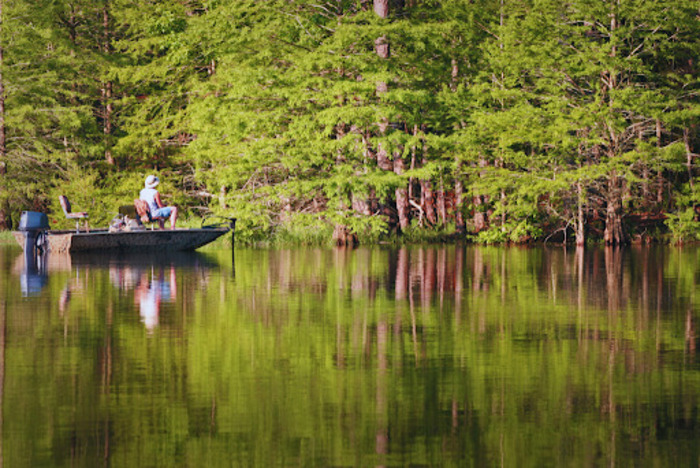
One of the best places to start your bass fishing journey in Texas is by exploring its remarkable lakes. Texas is home to several renowned bass fishing lakes, each offering a unique experience. From the best lake for bass fishing to the hidden gems waiting to be discovered, Texas has something for every angler.
Imagine spending a day fishing on a picturesque lake, surrounded by breathtaking scenery. Texas lakes not only provide an abundance of bass, but they also offer an unforgettable backdrop for your fishing adventures. From the serene and tranquil waters to the thrill of reeling in a big bass, every moment spent on these lakes is filled with excitement.
Texas is known for its diverse bass fishing opportunities, catering to both experienced anglers and beginners alike. Whether you prefer the challenge of catching black bass in a trophy bass lake or you’re looking for a bass factory where bass are caught in large numbers, Texas has it all. With its rich fishing heritage and the Texas state record for bass, there’s no denying that bass fishing in Texas is a one-of-a-kind experience.
To make the most of your bass fishing trip in Texas, it’s essential to gather reliable information and insider tips. By researching the best fishing spots, studying local regulations, and learning from experienced anglers, you can enhance your chances of landing that prized bass.
So, gear up and get ready to explore the best bass fishing lakes in Texas. Whether you’re aiming for a record-breaking catch or simply seeking the joy of being out on the water, Texas offers an unforgettable bass fishing experience. Get ready to cast your line, feel the adrenaline rush, and create memories that will last a lifetime.
Remember, the best places in Texas are waiting for you, and the thrill of bass fishing is just a castaway. Plan your next fishing adventure in the Lone Star State and get ready to reel in some big bass!
Top 3 Best Bass Fishing Lakes in Texas:
Lake Fork – A Bass Fishing Paradise
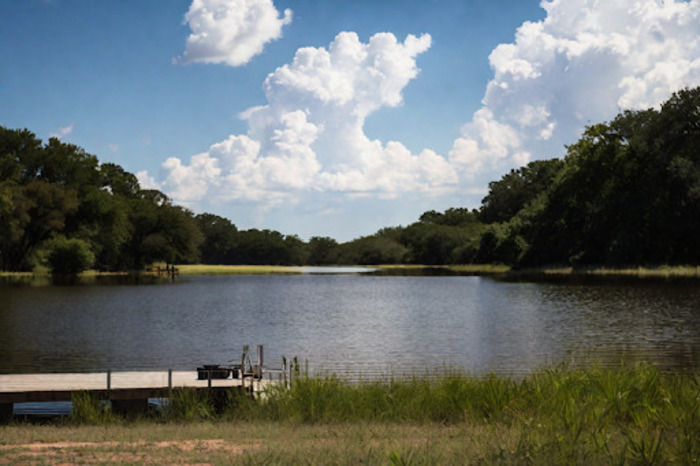
Lake Overview
Lake Fork is one of the best fishing lakes. With its vast expanse and abundant fish population, it has gained a reputation as one of the best bass fishing lakes in America. Covering an area of approximately 27,690 acres, Lake Fork provides ample opportunities for anglers to hook trophy-sized largemouth bass.
Lake Fork is located in the state of Texas, USA. To get there by car, you should take the I-20 highway and take exit 523 towards Emory. Then continue on FM 515 and make a left turn onto FM 17. There will be a sign indicating Lake Fork. FM 17 leads to the northern side of the lake, while FM 515 leads to the southern side.
If you prefer to travel by plane, the nearest airport to Lake Fork is Tyler Pounds Regional Airport. It is approximately 70 miles away from the lake. Upon arrival at the airport, you can rent a car and continue your journey to Lake Fork by following the driving directions mentioned above.
Bass Species
Lake Fork is primarily known for its thriving population of largemouth bass and white bass. These bass are known for their impressive size and fighting spirit, making them a favorite target for anglers seeking the ultimate bass fishing experience. The lake also supports other species such as crappie and catfish, adding to the diversity of fishing opportunities.
Hot Spots for Bass Fishing
When it comes to bass fishing, Lake Fork offers several prime spots that consistently yield impressive catches. Here are some of the best locations for catching bass on Lake Fork:
- Standing Timber: The presence of standing timber in certain areas of the lake provides excellent cover for bass. These timber-rich areas create a habitat where bass can hide, feed, and ambush prey.
- Submerged Roadbeds: Bass are often attracted to submerged roadbeds, which can be remnants of old roads or bridges. These underwater structures create natural channels and offer bass a place to congregate and search for food.
- Drop-offs: Bass are known to frequent drop-offs, where shallow water abruptly transitions into deeper areas. These sudden changes in depth provide bass with access to different types of prey and create opportunities for anglers to target them.
Exploring these hot spots and employing various fishing techniques can increase your chances of a successful bass fishing trip on Lake Fork.
Fishing Techniques and Tips
Best Fishing Techniques for Catching Bass
To increase your chances of success in Lake Fork, it’s essential to employ effective fishing techniques. Some popular techniques include:
- Flipping and Pitching: This technique involves precise casts near cover, such as submerged vegetation or fallen trees. Use a Texas-rigged soft plastic bait or a jig for better results.
- Topwater Fishing: Early morning and late evening are ideal for topwater action. Experiment with buzzbaits, frogs, or poppers to entice bass lurking near the surface.
- Deep Diving Crankbaits: In deeper areas, target bass by using crankbaits that can reach the desired depths. Vary your retrieval speed to find the most effective presentation.
Insider Tips and Local Knowledge
When fishing in Lake Fork, it’s crucial to have the right bait and lures. Some popular choices among local anglers include:
- Soft Plastic Worms: Texas-rigged worms in natural colors are a go-to bait for targeting bass in Lake Fork. Rig them weedless to navigate through the dense vegetation.
- Jigs: Football jigs and flipping jigs are highly effective in enticing bass from the cover. Match the color and size of the jig to the prevailing conditions for optimal results.
- Swimbaits: These realistic baitfish imitations can be productive for catching trophy bass in Lake Fork. Retrieve them slowly to mimic injured prey.
Notable Catches and Records
Lake Fork has a storied history of producing remarkable bass catches and setting records. It is home to some of the biggest bass ever caught, including the legendary ShareLunker program, which promotes the conservation of trophy largemouth bass. Anglers visiting Lake Fork have the opportunity to chase their own personal best and be part of the lake’s angling legacy.
Additional Amenities and Attractions
Apart from its outstanding bass fishing opportunities, Lake Fork offers a range of amenities and attractions that enhance the overall experience. Anglers can take advantage of well-equipped marinas, fishing guides, and boat rentals to make their fishing trip more convenient. Additionally, the surrounding area boasts scenic beauty, hiking trails, and camping facilities, making it an ideal destination for outdoor enthusiasts.
Fishing Regulation
To ensure sustainable fishing and preserve the bass population in Lake Fork, anglers must comply with certain fishing regulations. Here are the specific details regarding required licenses and permits, local restrictions, and fishing seasons:
- Required Licenses and Permits: Anglers are required to possess a valid fishing license in accordance with Texas state regulations. This license can be obtained from the Texas Parks and Wildlife Department (TPWD) or authorized vendors. It is essential to have the appropriate license before engaging in fishing activities in Lake Fork.
- Local Restrictions: In addition to the fishing license, anglers must familiarize themselves with local restrictions imposed by the TPWD and Lake Fork authorities. These restrictions may include specific rules regarding catch limits, size restrictions, and prohibited fishing methods or areas. It is crucial to adhere to these restrictions to ensure the sustainability of the bass population and the overall ecosystem.
- Fishing Seasons: Lake Fork has specific fishing seasons that dictate when certain species can be targeted. Anglers should consult the TPWD or local fishing authorities for the most up-to-date information on fishing seasons in Lake Fork. Understanding the fishing seasons will help anglers plan their trips accordingly and comply with the regulations in place.
By obtaining the required fishing license, adhering to local restrictions, and fishing within the designated seasons, anglers can contribute to the conservation efforts and enjoy a responsible and sustainable fishing experience in Lake Fork.
Discover the wonders of Lake Fork, where you can catch large bass and create unforgettable angling memories. Plan your fishing trip to this bass fishing paradise and experience the thrill of hooking trophy-sized bass in the heart of Texas.
Falcon Lake – Where Big Bass Await
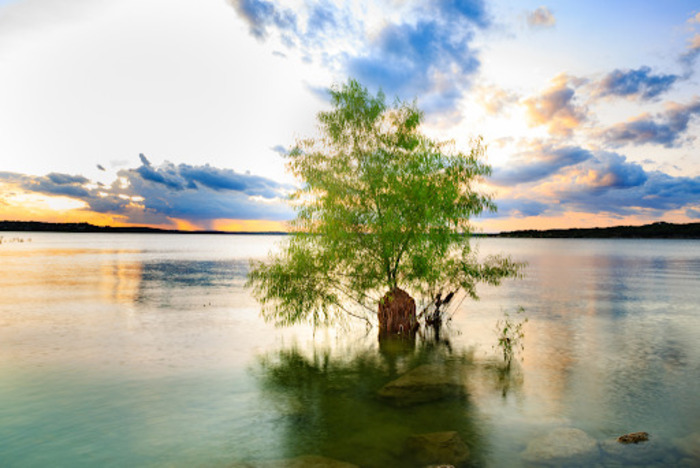
Lake Overview
Falcon Lake is located in South Texas, near the border with Mexico. Its precise location is in Starr County, west of the city of Roma. To reach the lake by car, you can follow the US-83 highway and turn west onto FM-2098 road, which will lead you to the lake. If you prefer to travel by plane, the closest airport to Falcon Lake is McAllen-Miller International Airport in McAllen, Texas.
Falcon International Reservoir covers an area of approximately 84,000 acres. It is a majestic body of water and proudly holds the title of one of the largest reservoirs in Texas. It is renowned for its exceptional qualities that make it a prime destination for avid anglers seeking the thrill of catching big bass.
Moreover, the lake’s surroundings bless onlookers with awe-inspiring picturesque landscapes, further enhancing the overall experience. As if its size and beauty weren’t enough, Falcon Lake boasts a diverse and thriving ecosystem, creating the perfect environment for the flourishing of various bass species, showcasing the wonders of nature at its finest.
Note: For the most up-to-date and accurate information, please refer to the official website of the Texas Parks and Wildlife Department
Bass Species
Falcon Lake is home to a variety of bass species, including largemouth bass, smallmouth bass, and spotted bass. These species thrive in the lake’s rich ecosystem, providing ample opportunities for anglers to target different types of bass.
Hot Spots for Bass Fishing
When it comes to bass fishing at Falcon Lake, there are several hot spots that consistently produce great results. Areas such as the Salado Creek, Tiger Creek, and the dam area are known to be particularly productive for catching big bass.
Fishing Techniques and Tips
To increase your chances of catching big bass at Falcon Lake, it’s important to use the right fishing techniques. Here are some tips to help you succeed:
- Use topwater lures early in the morning and late in the evening when bass are most active.
- Texas-rigged plastic worms and jigs work well for targeting bass hiding in vegetation.
- Pay attention to the wind direction and fish along windy shorelines, as bass tend to gather there to feed.
Timing is also crucial when fishing at Falcon Lake. The spring and fall seasons are known to be the most productive, as bass are more active during these times. Additionally, targeting areas with structure, such as submerged brush piles and rocky points, can lead to successful catches.
Notable Catches and Records
Over the years, Falcon Lake has produced some impressive bass catches and records. Anglers have reeled in bass weighing over 10 pounds, with the lake being home to numerous double-digit bass. The biggest bass ever caught at Falcon Lake weighed in at an astounding [insert weight] pounds.
Exploring the Surrounding Area at Falcon Lake
In addition to its exceptional bass fishing opportunities, Falcon Lake offers visitors a chance to explore the beautiful surrounding area. Nature enthusiasts can enjoy hiking trails, bird watching, and wildlife spotting.
Additionally, nearby attractions like Zapata County Museum and Falcon State Park provide additional recreational activities for anglers and their families to enjoy. Zapata County Museum showcases the rich history and culture of the region, while Falcon State Park offers camping, boating, and swimming opportunities.
Falcon Lake Fishing Regulation
Required Licenses and Permits
To engage in fishing activities at Falcon Lake, anglers are required to possess a valid fishing license issued by the state of Texas. This license can be obtained from the Texas Parks and Wildlife Department (TPWD) or authorized license retailers.
In addition to the fishing license, there may be certain additional permits or stamps required for specific fishing activities or target species. For example, if you plan to fish for trout or salmon, you may need a freshwater fishing endorsement. It is important to check the TPWD website or contact the local authorities for the most up-to-date information on any additional licenses or permits that may be required.
By obtaining the necessary licenses and permits, anglers contribute to the preservation of the bass population and the overall ecosystem while ensuring responsible and sustainable fishing practices at Falcon Lake.
Local Restrictions
In addition to the fishing regulations, there are certain local restrictions that anglers must adhere to while fishing at Falcon Lake. These restrictions may include specific areas where fishing is prohibited or limited, gear restrictions, and catch limits for certain species. It is important to be aware of and follow these restrictions to maintain the lake’s ecosystem and protect its bass population.
Fishing Seasons
Falcon Lake experiences different fishing seasons throughout the year, each with its own characteristics and regulations. It is crucial to be aware of the fishing seasons to plan your fishing trips accordingly. The spring and fall seasons are typically the most productive for bass fishing, as the bass are more active during these times. Understanding the fishing seasons will help optimize your chances of a successful and enjoyable fishing experience at Falcon Lake.
Lake Conroe – A Versatile Bass Fishing Destination

Lake Overview
Lake Conroe, located in Texas, is renowned for its diverse bass fishing opportunities. With its vast expanse of water and abundant underwater structures, this lake offers an ideal habitat for largemouth bass, making it a favorite destination for bass enthusiasts.
Location and Description of Lake Conroe
Lake Conroe is situated in Texas and covers an area of approximately 20,118 acres. It is a prime fishing spot, thanks to its variety of water bodies and abundance of underwater structures. The lake is surrounded by beautiful scenery and offers stunning views of the surrounding landscapes.
Getting to Lake Conroe
By Car:
To reach Lake Conroe by car from Houston, follow Interstate 45 North. Take exit 87A for FM 2854 Road/TX-105 toward Conroe. Merge onto N Fwy Service Road, then turn right onto FM 2854 Road/W Davis Street. Continue on FM 2854 Road for approximately 7 miles, and you will arrive at Lake Conroe.
For more detailed information and directions, you can visit the official Texas Parks and Wildlife Department website.
By Plane:
The nearest airport to Lake Conroe is George Bush Intercontinental Airport (IAH), located in Houston. Upon arrival at the airport, you can rent a car or take a taxi to reach Lake Conroe.
Bass Species
Lake Conroe is home to various bass species: largemouth bass, hybrid striped bass and white bass. But the most sought-after is the largemouth bass. These feisty and powerful fish provide an exhilarating challenge for anglers looking to test their skills and land a trophy-sized catch.
Hot Spots for Bass Fishing
When it comes to finding the best bass fishing spots on Lake Conroe, several areas consistently produce excellent results. Some notable hot spots include:
- The area around the FM 1097 bridge, where bass often gather near the submerged structures and drop-offs.
- The northern end of the lake is known for its abundant vegetation and productive fishing grounds.
- The numerous docks and boathouses scattered throughout the lake, provide cover and attract bass.
Fishing Techniques and Tips
To maximize your success on Lake Conroe, it’s crucial to employ the right fishing techniques and adapt to the prevailing conditions. Here are some effective techniques and tips for bass fishing:
Fishing Techniques:
- Topwater Fishing: During the early morning or late evening, try using topwater lures like buzzbaits or poppers to entice bass near the surface.
- Texas Rig: Rig your soft plastic baits weedless using a Texas rig. This technique allows you to navigate through the lake’s vegetation without getting snagged.
- Deep-Diving Crankbaits: When targeting deeper waters, opt for deep-diving crankbaits to reach the desired depths where bass may be hiding.
Tips for Adapting to Seasonal and Environmental Conditions:
- Spring: In the spring, focus on shallow areas with spawning beds where bass congregate to reproduce.
- Summer: As water temperatures rise, bass seek cooler depths and shade. Target submerged structures and deeper waters during this season.
- Fall: During the fall, bass becomes more active and feeds voraciously. Look for areas with increased baitfish activity and focus on reaction baits.
- Winter: In colder months, slow down your presentation and fish deeper waters where bass seek warmer temperatures.
Notable Catches and Records
Over the years, Lake Conroe has become renowned for its exceptional bass fishing opportunities. Anglers from all over have flocked to the lake in search of the thrill of catching trophy-sized largemouth bass. The tales of impressive catches and record-breaking fish have spread far and wide, attracting even more fishing enthusiasts to the area. It is truly a testament to the remarkable potential that Lake Conroe holds for those who are passionate about angling and the pursuit of big game fish.
Enjoying Lake Conroe Beyond Bass Fishing
Lake Conroe offers more than just exceptional bass fishing. Visitors can explore a range of recreational activities and attractions in the area. Some popular options include:
- Boating and Water Sports: Enjoy a day on the water by boating, jet skiing, or engaging in various water sports.
- Swimming and Beaches: Relax and soak up the sun at one of Lake Conroe’s scenic beaches.
- Hiking and Nature Trails: Experience the natural beauty surrounding the lake by exploring the hiking and nature trails in the vicinity.
- Golfing: Tee off at one of the golf courses near Lake Conroe for a leisurely round of golf.
Falcon Lake Fishing Regulation
When planning a fishing trip to Lake Conroe, it’s essential to be aware of the fishing regulations in place. Here are some key points to keep in mind:
Required Licenses and Permits:
Make sure to obtain the necessary fishing license and any additional permits required by the state of Texas before casting your line into Lake Conroe. Visit the Texas Parks and Wildlife Department website for detailed information on licenses and permits.
Local Restrictions:
Be mindful of any local restrictions or guidelines that may apply to fishing on Lake Conroe. Stay updated on any size or bag limits, as well as any specific rules applicable to certain areas of the lake.
Fishing Seasons:
Stay informed about the fishing seasons and any closures or restrictions that may be in effect during certain times of the year. The Texas Parks and Wildlife Department provides up-to-date information on fishing seasons and regulations.
Other Best Fishing Lakes for Bass Fishing in Texas:
Sam Rayburn Reservoir
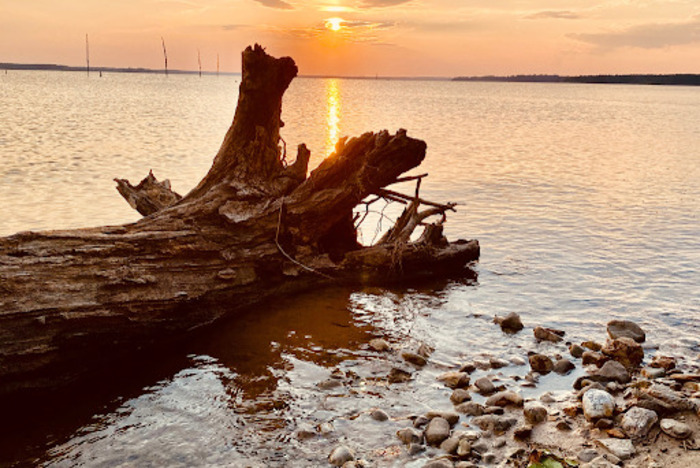
Lake Overview
Lake Location
Sam Rayburn Reservoir is located in the state of Texas, specifically in the Angelina National Forest in the eastern part of the state.
Directions
By Car
To reach Sam Rayburn Reservoir by car, you can take Highway 147, which runs near the lake. The reservoir is approximately 20 miles northwest of Jasper, Texas.
By Air
If you prefer to travel by air, the closest major airport to Sam Rayburn Reservoir is George Bush Intercontinental Airport (IAH) in Houston, Texas. From the airport, you can rent a car and drive approximately 120 miles northeast to reach the reservoir.
Attractions
Sam Rayburn Reservoir offers more than just great bass fishing. The surrounding area provides various recreational activities, such as camping, hiking, and boating. You can also explore the nearby Angelina National Forest, which is known for its beautiful scenery and wildlife.
Bass Species
The primary bass species found in Sam Rayburn Reservoir are the largemouth bass and white bass. Largemouth bass are known for their size and aggressiveness, making them a popular target for anglers.
Hot Spots for Bass Fishing
When it comes to bass fishing at Sam Rayburn Reservoir, there are several hot spots that you should consider:
- Buck Bay: This area is known for its submerged vegetation, which attracts bass.
- Veach Basin: Bass are often found near the standing timber in this area.
- Ayish Bayou: This bayou provides excellent fishing opportunities, especially during the spring spawning season.
Local Tips for Best Bass Fishing
To increase your chances of success when bass fishing at Sam Rayburn Reservoir, consider these local tips:
- Use topwater lures early in the morning and late in the evening when bass are most active near the surface.
- Target areas with submerged vegetation, such as lily pads and hydrilla beds, as they provide cover and food for bass.
- Experiment with different lure colors and sizes to find what the bass are most responsive to on any given day.
Toledo Bend Reservoir

Lake Overview
Location
Toledo Bend Reservoir is situated in the eastern part of Texas, on the border between Texas and Louisiana. It covers parts of Sabine and Newton Counties in Texas and Sabine Parish in Louisiana.
Directions
By Car:
To reach Toledo Bend Reservoir by car, you can take Interstate 10 to Highway 87, then follow the signs to the reservoir. There are multiple access points along the lake, providing convenient entry for anglers.
By Air:
If you prefer to fly, the nearest major airports are George Bush Intercontinental Airport (IAH) in Houston, Texas, and Shreveport Regional Airport (SHV) in Shreveport, Louisiana. From there, you can rent a car and drive to Toledo Bend Reservoir.
Attractions
Aside from its excellent bass fishing opportunities, Toledo Bend Reservoir offers a range of attractions for visitors. The lake is surrounded by beautiful scenery, including forests and rolling hills. Outdoor enthusiasts can also enjoy activities such as boating, swimming, hiking, and camping in the nearby parks and recreation areas.
Bass Species
Toledo Bend Reservoir is home to various bass species: largemouth bass, striped bass and white bass, with the most prominent being the largemouth bass. Largemouth bass are highly sought after by anglers due to their size and fighting ability. The reservoir also supports populations of other bass species, including smallmouth bass and spotted bass.
Hot Spots for Bass Fishing
- Huxley Bay: Located on the Texas side of the reservoir, Huxley Bay is known for its abundant underwater structure, such as submerged trees and brush piles. These structures provide excellent hiding spots for bass, making it a productive area for catching them.
- Six Mile Creek: Situated towards the southern end of the reservoir, Six Mile Creek offers a diverse habitat for bass. The creek’s channel and surrounding areas provide ample opportunities to target feeding bass.
- Chicken Coop: This area is famous for its submerged vegetation and abundance of baitfish, which attract bass. Anglers often find success using topwater lures and plastic worms in the Chicken Coop area.
Local Tips for Best Bass Fishing
- Early mornings and late evenings are prime times for bass-feeding activity. Plan your fishing trips accordingly to maximize your chances of success.
- Focus on areas with structure, such as submerged vegetation, fallen trees, and rocky points. These spots provide cover and ambush opportunities for bass.
- Experiment with different lure presentations, such as crankbaits, spinnerbaits, and soft plastics, to see what the bass are responding to on any given day.
- Pay attention to water temperature and weather conditions. Bass tend to be more active and responsive to lures when the water is slightly warmer.
Lake Lyndon B. Johnson
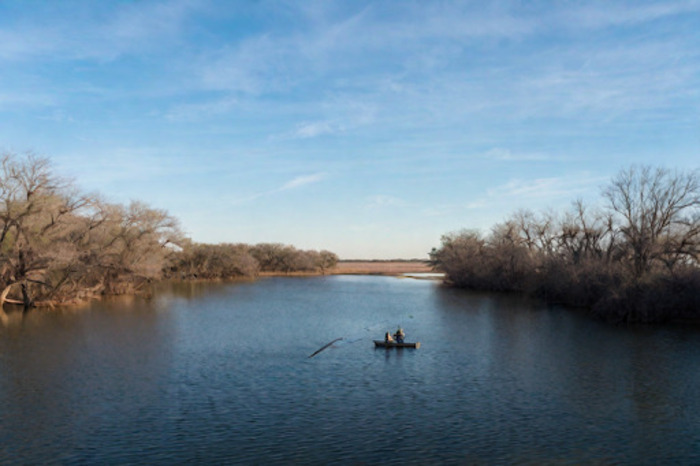
Lake Overview
Location
Lake Lyndon B. Johnson, also known as Lake LBJ, is located in the heart of the Texas Hill Country in central Texas. It is situated in the counties of Llano and Burnet.
Directions
By Car: Lake LBJ is easily accessible by car. From Austin, take Highway 71 west towards Llano. From San Antonio, take Highway 281 north towards Marble Falls. Follow the signs to Lake LBJ.
By Air: The closest major airport to Lake LBJ is Austin-Bergstrom International Airport (AUS), located approximately 70 miles southeast of the lake. From the airport, you can rent a car and drive to Lake LBJ.
Attractions
Lake LBJ offers more than just great bass fishing. Visitors can enjoy various recreational activities such as boating, water skiing, swimming, and camping. The beautiful scenery and tranquil atmosphere make it a popular destination for outdoor enthusiasts.
Bass Species
Lake LBJ is home to largemouth bass and white bass, with the most prominent being the largemouth bass. Largemouth bass are known for their size, strength, and aggressive nature, making them a popular target for anglers.
Hot Spots for Bass Fishing
When it comes to bass fishing on Lake LBJ, there are several hot spots that consistently produce good catches. Some notable areas include:
- Sunrise Beach: Located on the northern end of the lake, Sunrise Beach is known for its rocky shoreline and abundant underwater structure, which provides excellent habitat for bass.
- Horseshoe Bay: Situated on the western side of the lake, Horseshoe Bay offers a mix of shallow and deep water, along with submerged vegetation, making it a prime spot for bass fishing.
- Sandy Creek: Found on the southern part of the lake, Sandy Creek is known for its clear water and submerged brush, which attract bass seeking shelter and food.
Local Tips for Best Bass Fishing
To increase your chances of success when fishing for bass at Lake LBJ, consider the following tips:
- Time of Day: Early morning and late evening are often the most productive times to fish for bass, as they are more active during these periods.
- Bait Selection: Use a variety of baits such as plastic worms, crankbaits, and topwater lures to target bass in different depths and cover types.
- Focus on Structure: Look for areas with submerged vegetation, fallen trees, rocky points, and underwater ledges, as these are prime locations where bass like to hide and ambush their prey.
Lake Ray Roberts

Lake Overview
Location
Lake Ray Roberts is located in the northeastern part of the state of Texas, approximately 60 miles north of Dallas. It is situated in Denton County near the town of Pilot Point.
Directions
To reach Lake Ray Roberts by car, you can take Interstate 35E and exit onto Highway 380. Follow Highway 380 west until you reach the lake.
For those traveling by air, the closest major airport is Dallas/Fort Worth International Airport (DFW). From the airport, you can rent a car and drive to Lake Ray Roberts, which is about an hour’s drive away.
Attractions
Lake Ray Roberts offers more than just excellent bass fishing. The lake is surrounded by beautiful scenery and offers opportunities for camping, hiking, and bird-watching. There are also picnic areas and boat ramps available for visitors to enjoy.
Bass Species
Lake Ray Roberts is known for its abundant population of largemouth bass. Anglers can also find other bass species such as white bass, spotted bass and smallmouth bass in the lake.
Hot Spots for Bass Fishing
When it comes to bass fishing at Lake Ray Roberts, there are several hot spots that anglers should explore. Some popular areas include the Johnson Branch Unit, Isle du Bois Unit, and the Ray Roberts Marina. These areas are known for their productive bass fishing and offer a variety of fishing opportunities.
Read more: Crescent Lake Fishing Fishing: Fish Species, Tips, Fishing License – Florida
Local Tips for Best Bass Fishing
To have the best chance of success when fishing for bass at Lake Ray Roberts, here are some local tips to keep in mind:
- Fish early in the morning or late in the evening when the bass are most active.
- Use a variety of lures and techniques, such as topwater lures, jigs, and soft plastics, to entice the bass.
- Pay attention to the water temperature and weather conditions, as they can impact the bass’s behavior.
- Focus on areas with structure, such as submerged vegetation, rocky points, and drop-offs, where bass are likely to hide.
Lake Alan Henry
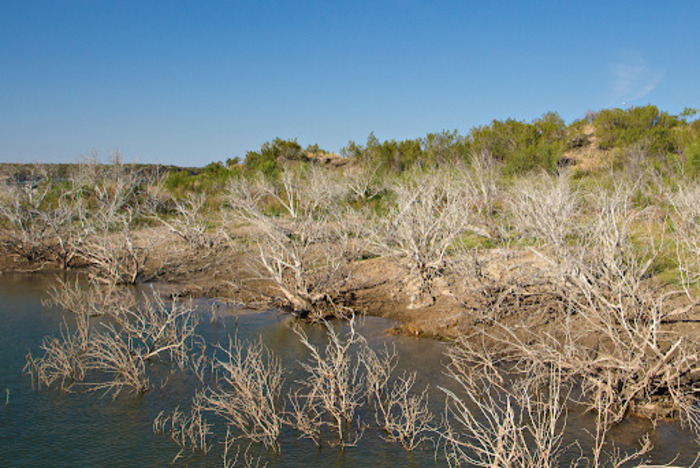
Lake Overview
Location within the state of Texas
Lake Alan Henry is located in the northwestern part of Texas, about 50 miles southeast of Lubbock. It is situated in Garza County and covers an area of approximately 2,880 acres. The lake is known for its crystal-clear blue waters and picturesque surroundings.
Directions
By Car:
To reach Lake Alan Henry by car, you can take US-84 and then turn south onto FM 2458. Follow FM 2458 until you reach the lake. There are signs along the way to guide you.
By Air:
If you prefer to travel by air, the closest major airport to Lake Alan Henry is Lubbock Preston Smith International Airport (LBB). From there, you can rent a car and drive southeast on US-84 to reach the lake.
Attractions
In addition to fantastic bass fishing opportunities, Lake Alan Henry offers a range of attractions for outdoor enthusiasts. The lake is surrounded by beautiful rolling hills and scenic landscapes, providing a serene and peaceful environment for visitors. Fishing is not the only activity you can enjoy here; you can also go boating, camping, hiking, and bird-watching.
Bass Species
Lake Alan Henry is home to various bass species, with largemouth bass being the most sought-after. Largemouth bass thrive in the lake’s clear waters and offer anglers exciting opportunities for a thrilling fishing experience.
Hot Spots for Bass Fishing
When it comes to bass fishing at Lake Alan Henry, there are several hot spots that consistently produce good catches. Some popular areas include the northern and western shorelines, the submerged islands, and the areas near underwater structures and vegetation. These locations provide ideal habitats for bass and increase your chances of landing a trophy-sized fish.
Local Tips for Best Bass Fishing
To maximize your success while bass fishing at Lake Alan Henry, consider these local tips:
- Use topwater lures early in the morning and late in the evening when bass are most active near the surface.
- Target areas with submerged structures, such as fallen trees, rock formations, and weed beds, as bass often seek shelter in these areas.
- Experiment with different bait and lure presentations to find what works best on any given day.
- Pay attention to weather conditions, as bass behavior can change based on factors such as temperature, wind, and cloud cover.
Lake Texoma

Lake Overview
Location within the state of Texas
Lake Texoma is located on the Texas-Oklahoma border, with the majority of its waters in Texas. It covers parts of Cooke, Grayson, and Fannin counties in Texas.
Directions
By Car
If you’re traveling by car, you can reach Lake Texoma by taking Interstate 35 to Gainesville, Texas. From there, take Highway 82 west to Sherman, and finally, take Highway 289 north to the lake.
By Air
For those traveling by air, the nearest major airport is Dallas/Fort Worth International Airport (DFW), which is approximately 90 miles south of Lake Texoma. From the airport, you can rent a car and follow the directions mentioned above.
Attractions
Apart from its excellent bass fishing opportunities, Lake Texoma offers various attractions for visitors. You can explore the nearby Eisenhower State Park, which offers camping, hiking trails, and scenic views of the lake. Additionally, the area around Lake Texoma is known for its wildlife and birdwatching opportunities.
Bass Species
Lake Texoma is home to various bass species, including largemouth bass, smallmouth bass, striped bass and white bass. However, largemouth bass is the most popular and widely targeted species among anglers.
Hot Spots for Bass Fishing
When it comes to bass fishing at Lake Texoma, there are several hot spots worth exploring. Some of the popular areas include:
- Johnson Creek: Known for its submerged structure and deep water, Johnson Creek is a great spot to target largemouth bass.
- Washita Point: This area offers shallow flats and weed beds, making it an ideal spot for fishing during spawning season.
- Preston Point: With its rocky points and ledges, Preston Point is known for producing quality largemouth bass.
Local Tips for Best Bass Fishing
To enhance your bass fishing experience at Lake Texoma, consider the following local tips:
- Time your fishing trips early in the morning or late in the evening when bass are most active.
- Experiment with different bait and lure types, such as plastic worms, crankbaits, and spinnerbaits.
- Focus on areas with underwater structures like submerged trees, rocks, and drop-offs, as these are prime locations for bass.
Lake O’ the Pines

Lake Overview
Lake O’ the Pines is a beautiful reservoir located in the state of Texas, USA. It is situated in the northeastern part of the state, near the city of Jefferson. The lake covers an area of approximately 18,700 acres and is known for its scenic beauty and abundant bass population.
Location
Lake O’ the Pines is located in Marion, Morris, and Upshur counties in Texas.
Directions (by car and by air)
To reach Lake O’ the Pines by car, you can take Highway 49 or Highway 11, depending on your starting point. If you’re traveling by air, the closest major airport is the East Texas Regional Airport in Longview, which is approximately 35 miles away from the lake.
Attractions
Apart from its fantastic bass fishing opportunities, Lake O’ the Pines offers a range of attractions for visitors. The lake is surrounded by beautiful forests, making it a great spot for nature lovers. You can also enjoy boating, swimming, and camping in the designated areas around the lake.
Bass Species
Lake O’ the Pines is known for its thriving population of white bass and largemouth bass. These popular game fish can be found in abundance throughout the lake. Anglers from all over the country visit the lake to test their skills and try to catch some trophy-sized bass.
Hot Spots for Bass Fishing
When it comes to bass fishing at Lake O’the Pines, there are several hotspots that anglers should explore. Some popular areas include Johnson Creek, Big Cypress Bayou, and Brushy Creek. These spots are known for their excellent bass habitat and can provide exciting fishing opportunities.
Local Tips for Best Bass Fishing
To have the best chance of success when fishing for bass at Lake O’the Pines, consider the following local tips:
- Use topwater lures early in the morning and late in the evening for explosive bass strikes.
- Target areas with submerged vegetation, fallen trees, and rocky structures where bass often hide.
- Experiment with different bait colors and retrieve speeds to find what works best on any given day.
- Pay attention to weather patterns and adjust your fishing techniques accordingly.
Lake Amistad
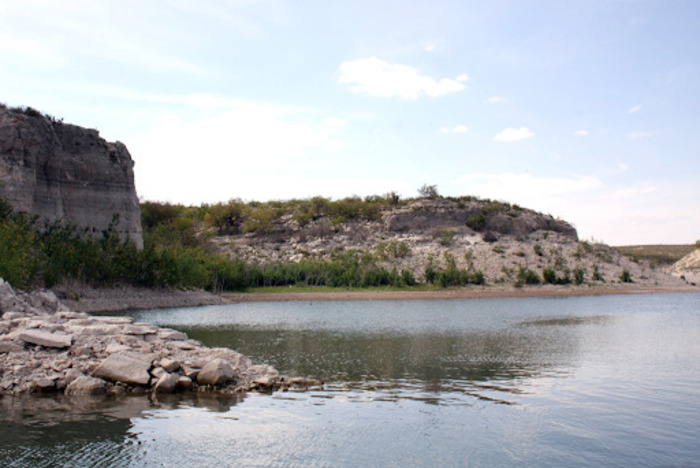
Lake Overview
Location
Lake Amistad is located in Val Verde County, Texas, near the border with Mexico. It is situated about 12 miles northwest of Del Rio.
Directions
By Car
To reach Lake Amistad by car, you can take US Highway 90 west of San Antonio, then turn north on State Highway 277. Continue on Highway 277 until you reach Del Rio, where you can follow signs to the lake.
By Air
If you prefer to fly, the closest airport to Lake Amistad is Del Rio International Airport (DRT). From the airport, you can rent a car and drive to the lake, which is approximately a 20-minute drive away.
Attractions
Lake Amistad offers more than just great bass fishing. The clear blue waters and beautiful surrounding landscapes make it a popular destination for boating, swimming, and camping. Additionally, the area is known for its diverse wildlife and bird-watching opportunities.
Bass Species
Lake Amistad is home to various bass species, including largemouth bass, smallmouth bass, striped bass, white bass and Guadalupe bass. However, the lake is particularly renowned for its exceptional largemouth bass fishing.
Hot Spots for Bass Fishing
When it comes to bass fishing at Lake Amistad, there are several hot spots that anglers should explore. Some popular areas include Devil’s River, Box Canyon, and the submerged structure near the dam. These spots are known for consistently producing trophy-sized bass.
Local Tips for Best Bass Fishing
To increase your chances of success when fishing for bass at Lake Amistad, consider the following local tips:
- Bass tend to be more active during early morning and late evening, so plan your fishing trips accordingly.
- Use a variety of lures and techniques, such as topwater baits, plastic worms, and crankbaits, to target bass in different conditions.
- Pay attention to the weather and water conditions, as these factors can greatly affect bass behavior and feeding patterns.
- Don’t overlook shallow areas, especially during the spring and fall seasons, as bass often move to these areas to feed and spawn.
Choke Canyon Reservoir
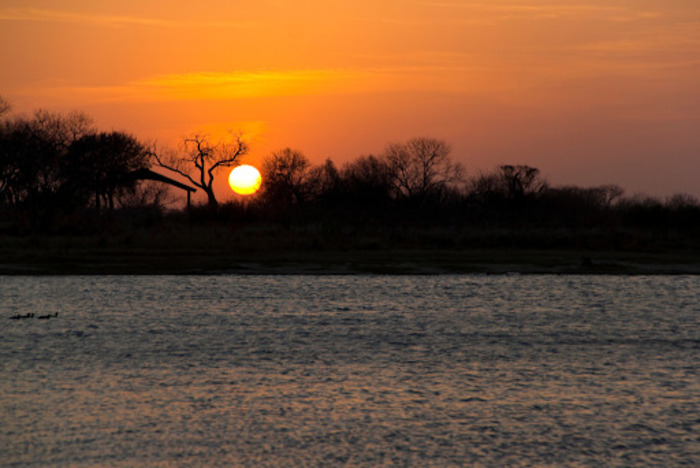
Lake Overview
Location
Choke Canyon Reservoir is located in southern Texas, in the heart of the state. It is situated in Three Rivers, Live Oak County.
Directions
By Car:
To reach Choke Canyon Reservoir by car, you can take Interstate 37 and exit onto Highway 72 towards Three Rivers. Follow the signs to the reservoir.
By Air:
If you prefer to fly, the closest major airport is Corpus Christi International Airport, which is approximately 80 miles away from Choke Canyon Reservoir. From the airport, you can rent a car and drive to the reservoir.
Attractions
Choke Canyon Reservoir offers more than just great bass fishing. The area is known for its beautiful natural scenery, making it a perfect destination for nature lovers. Visitors can enjoy hiking trails, bird-watching, and wildlife viewing. Additionally, there are camping and picnic areas for those who want to spend more time exploring the surroundings.
Bass Species
Choke Canyon Reservoir is home to largemouth bass and white bass, with the most prominent being the largemouth bass. Largemouth bass are known for their size and fighting spirit, making them a popular target for anglers in the area.
Hot Spots for Bass Fishing
When it comes to bass fishing at Choke Canyon Reservoir, there are several hot spots that consistently produce good catches. Some of the notable areas include:
- North Shore: This area is known for its submerged vegetation and structure, providing excellent cover for bass.
- South Shore: Anglers often find success near the submerged brush and timber along the south shore.
- West Bank: The west bank of the reservoir offers diverse fishing opportunities, with rocky areas and points that attract bass.
Local Tips for Best Bass Fishing
To increase your chances of a successful bass fishing trip at Choke Canyon Reservoir, consider the following tips:
- Use topwater lures early in the morning and late in the evening when bass are more active near the surface.
- Target areas with submerged structures, such as brush piles, fallen trees, and rock formations.
- Experiment with different lure colors and sizes to find what the bass are biting on that particular day.
- Pay attention to water temperature and weather conditions, as they can affect bass behavior and feeding patterns.
O.H. Ivie Lake
Lake Overview
Location
O.H. Ivie Lake is located in central Texas, near the town of Brady. It is situated in Concho, Brown, and Coleman counties.
Directions
By Car
To reach O.H. Ivie Lake by car, you can take US Highway 87 or US Highway 377. The lake is approximately 15 miles southeast of Brady.
By Air
If you prefer to travel by air, the nearest major airports are San Angelo Regional Airport and Austin-Bergstrom International Airport. From there, you can rent a car and drive to O.H. Ivie Lake.
Attractions
O.H. Ivie Lake offers more than just great bass fishing. Visitors can enjoy various recreational activities such as boating, camping, and birdwatching. The lake is also known for its scenic beauty, with stunning views of the surrounding Texas landscape.
Bass Species
O.H. Ivie Lake is home to largemouth bass and white bass, but the most sought-after is the largemouth bass. Anglers flock to this lake in search of trophy-sized bass and the thrill of reeling in these feisty fighters.
Hot Spots for Bass Fishing
When it comes to bass fishing at O.H. Ivie Lake, there are several hot spots that consistently produce good catches. Some popular areas include Willow Creek, Elm Creek, and Paint Creek. These areas are known for their abundant underwater structures, such as submerged trees and rock formations, which provide ideal habitats for bass.
Local Tips for Best Bass Fishing
To maximize your chances of success, here are some local tips for bass fishing at O.H. Ivie Lake:
- Early morning and late evening are prime times for bass feeding activity. Plan your fishing trips accordingly.
- Use a variety of bait and lure options, including topwater lures, plastic worms, and crankbaits, to attract the attention of bass in different conditions.
- Focus on fishing around areas with vegetation, such as lily pads and submerged grass, as bass often hide and hunt in these spots.
- Pay attention to the weather and water conditions. Bass are more active and likely to bite when the water temperature is favorable, and there is some cloud cover or light rain.
Palestine Lake
Lake Overview
Location
Palestine Lake is located in Anderson County, Texas, in the southern part of the state. It covers an area of approximately 25,000 acres, making it one of the largest lakes in Texas.
Directions
By Car:
To reach Palestine Lake by car, you can take Interstate 45 and exit onto Highway 79. From there, follow the signs to the lake. The drive from Dallas takes approximately two hours, while the drive from Houston takes around three and a half hours.
By Air:
If you prefer to fly, the closest major airport to Palestine Lake is Dallas/Fort Worth International Airport (DFW). From the airport, you can rent a car and drive to the lake following the directions mentioned above.
Attractions
Apart from its excellent bass fishing opportunities, Palestine Lake offers various attractions for visitors. The lake is surrounded by beautiful scenery and provides opportunities for boating, camping, and birdwatching. Additionally, the nearby city of Palestine offers historical sites, charming shops, and delicious local cuisine.
Bass Species
Palestine Lake is home to largemouth bass and white bass, with the most notable being the largemouth bass. Largemouth bass are highly sought after by anglers due to their impressive size and thrilling fighting ability.
Read more: Bass Fishing Near Me: Best Bass Fishing Spots – Lake and Ponds
Hot Spots for Bass Fishing
When fishing for bass at Palestine Lake, several hot spots are worth exploring. Some of the popular areas include the submerged vegetation near the dam, the numerous coves and creek channels, and the rocky points along the shoreline. These spots often provide ideal habitats for bass, attracting them in good numbers.
Local Tips for Best Bass Fishing
To enhance your bass fishing experience at Palestine Lake, consider the following local tips:
- Early morning and late afternoon are typically the most productive times for bass fishing.
- Topwater lures, such as buzzbaits and poppers, can be particularly effective during low-light conditions.
- Target areas with submerged structures, such as fallen trees or submerged brush piles, as bass often seek cover in these areas.
- Experiment with different lure presentations, including crankbaits, plastic worms, and jigs, to find what works best on any given day.
Caddo Lake

Lake Overview
Location
Caddo Lake is located in the northeastern part of Texas, near the border with Louisiana. It covers an area of about 26,800 acres and is known for its diverse ecosystem and scenic beauty.
Directions
By Car:
Caddo Lake is easily accessible by car. From major cities in Texas, you can take Interstate 20 or Interstate 49 and then follow the local highways to reach the lake.
By Air:
If you prefer to travel by air, the nearest major airport is Shreveport Regional Airport in Louisiana, which is approximately 40 miles away from Caddo Lake. From the airport, you can rent a car and drive to the lake.
Attractions
Caddo Lake offers more than just bass fishing. It is surrounded by beautiful cypress trees, creating a picturesque landscape. The lake is also home to a variety of wildlife, including birds, turtles, and alligators. Visitors can enjoy activities such as boating, kayaking, and birdwatching while exploring the natural beauty of the lake.
Bass Species
Caddo Lake is known for its abundant bass population. Anglers can find various species of bass in the lake, including largemouth bass, smallmouth bass, and spotted bass. These bass provide exciting fishing opportunities for both beginners and experienced anglers.
Hot Spots for Bass Fishing
When it comes to bass fishing at Caddo Lake, there are several hot spots that are worth exploring. Here are some popular areas to target bass:
- Johnson’s Ranch Marina: This marina provides easy access to the lake and is known for its productive bass fishing spots. Anglers can find bass hiding around submerged structures and vegetation.
- Big Cypress Bayou: This section of the lake offers excellent fishing opportunities, especially during the early morning and late afternoon. Anglers can try casting near fallen trees and submerged logs to target bass.
- Goose Prairie: This shallow area is known for its abundant vegetation and is a favorite spot for bass. Anglers can use topwater lures or soft plastics to entice bass in this area.
Local Tips for Best Bass Fishing
To maximize your chances of success while bass fishing at Caddo Lake, consider the following tips:
- Time for your fishing trips: Early morning and late afternoon are generally the best times to catch bass at Caddo Lake. Bass tend to be more active during these periods.
- Use the right bait: Bass at Caddo Lake are known to respond well to a variety of lures and baits, including topwater lures, crankbaits, and soft plastics. Experiment with different baits to see what works best on any given day.
- Target structure and vegetation: Bass in Caddo Lake often hide around submerged structures, fallen trees, and vegetation. Cast your bait near these areas to increase your chances of catching bass.
- Be patient and observant: Bass fishing requires patience and observation. Pay attention to the water conditions, weather patterns, and any signs of bass activity. Adjust your fishing techniques accordingly.
Lake Travis

Lake Overview
Location
Lake Travis is located in the southern part of the state of Texas, spanning across Travis and Burnet counties. It is situated about 20 miles northwest of downtown Austin.
Directions
By car
To reach Lake Travis by car, you can take Highway 71 west from Austin. Follow the signs for Lake Travis, and you will find various access points along the shoreline.
By air
If you prefer to travel by air, the closest major airport to Lake Travis is Austin-Bergstrom International Airport (AUS). From the airport, you can rent a car and drive to the lake, which is approximately a 40-minute drive.
Attractions
Lake Travis offers more than just great bass fishing. The area is known for its stunning natural beauty, with clear blue waters surrounded by rolling hills. Visitors can also enjoy various water activities such as boating, swimming, and water skiing. Additionally, there are several parks, campgrounds, and hiking trails in the vicinity for outdoor enthusiasts to explore.
Bass Species
Lake Travis is home to a variety of bass species, including largemouth bass, smallmouth bass and Guadalupe bass. These species thrive in the lake’s clear waters and provide exciting opportunities for anglers.
Hot Spots for Bass Fishing
When it comes to bass fishing at Lake Travis, there are several hot spots that anglers should check out. Here are a few popular locations:
- Mansfield Dam Park: Located near the dam on the western end of the lake, Mansfield Dam Park offers excellent bank fishing opportunities and easy access to the water.
- Sandy Creek Park: Situated on the northern shore, Sandy Creek Park is known for its rocky shoreline and submerged structure, making it a prime spot for bass.
- Paleface Park: This park, located on the southern shore, has a reputation for producing trophy-sized bass. Anglers can find success fishing along the rocky points and drop-offs.
Local Tips for Best Bass Fishing
To maximize your chances of success while bass fishing at Lake Travis, consider these local tips:
- Early morning and late evening are often the best times to catch bass, as they are more active during these cooler periods.
- Focus your efforts on underwater structures, such as submerged trees, rocky points, and drop-offs.
- Use a variety of bait and lure options, such as plastic worms, crankbaits, and topwater lures, to find what the bass are biting on that day.
- Pay attention to the weather conditions, as bass tend to be more active and feed more aggressively before a storm.
With its scenic beauty and abundant bass population, Lake Travis in Texas offers a fantastic fishing experience for anglers of all skill levels.
Top Tips for Catch More Bass in Texas
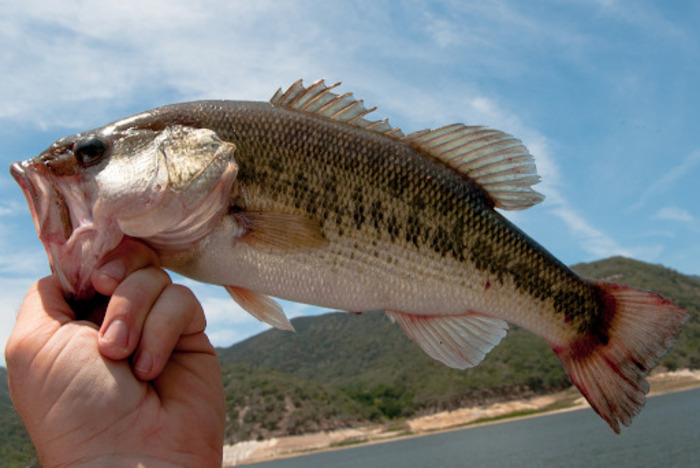
Texas is known for its excellent bass fishing opportunities, with numerous lakes and fishing destinations to explore. If you’re looking to reel in the biggest bass in Texas, follow these top tips to enhance your bass fishing experience.
Research the Best Fishing Lakes in Texas
To start your bass fishing journey in Texas, it’s crucial to research the best fishing lakes in the state. Some of the top-rated bass fishing lakes in Texas include:
- Lake Fork Reservoir
- Falcon Lake
- Lake Conroe
- Sam Rayburn Reservoir
- Toledo Bend Reservoir
- Lake O’ the Pines
These lakes offer productive bass fishing grounds and have a reputation for producing some of the biggest bass in Texas. Make sure to gather information about the specific fishing regulations and seasons for each lake to ensure compliance.
Understand Bass Behavior and Habits
To increase your chances of catching more bass, it’s essential to understand their behavior and habits. Bass are known to be opportunistic feeders and prefer areas with cover, such as submerged vegetation, fallen trees, and rocky structures. They are most active during early morning and late afternoon when the water temperature is optimal.
Choose the Right Fishing Techniques and Lures
Selecting the appropriate fishing techniques and lures can significantly impact your success in catching bass. Some effective techniques for bass fishing in Texas include:
- Texas Rig: This rig is ideal for fishing in areas with heavy cover. It involves rigging a soft plastic bait weedless and allowing it to sink near potential hiding spots for bass.
- Crankbaits: Crankbaits imitate injured baitfish and can be effective for covering a large area quickly.
- Topwater Lures: Using topwater lures early in the morning or late in the evening can entice bass to strike aggressively.
Experiment with different techniques and lures to find what works best for the specific conditions and the behavior of the bass in the chosen fishing location.
Stay Updated on Bass Fishing Tournaments and Events
Bass fishing tournaments and events offer valuable opportunities to learn from professional bass anglers and gain insights into successful techniques. Stay updated on local bass fishing tournaments and consider participating to expand your knowledge and skills.
Practice Catch and Release
Preserving the bass population is crucial for maintaining healthy fisheries in Texas. Practice catch and release whenever possible to ensure the sustainability of bass populations for future generations. Handle the fish with care, use proper fishing gear to minimize harm, and release them gently back into the water.
Texas Bass Fishing Regulations
Required Licenses and Permits
To legally fish for bass in Texas, you must obtain the necessary licenses and permits. The Texas Parks and Wildlife Department (TPWD) is responsible for regulating fishing activities in the state. You will need to obtain a valid Texas fishing license, which can be purchased online through the TPWD website. Make sure to check the specific requirements and fees associated with the license, as they may vary depending on your residency status and age.
Local Restrictions
It is important to be aware of any local restrictions that may apply to bass fishing in Texas. Different bodies of water may have specific rules and regulations in place to protect the fish population and ensure sustainable fishing practices. Before you embark on your fishing trip, consult the TPWD website or contact the local authorities to familiarize yourself with any restrictions that may be in effect.
Fishing Seasons
Texas Lakes are open for fishing year-round, certain periods may yield better results. Spring and fall are generally considered prime seasons for bass fishing, as the water temperatures are more favorable and the bass are more active. However, with the right techniques and strategies, bass can be caught throughout the year.
The TPWD provides an Outdoor Annual publication that outlines the rules and regulations for fishing in Texas, including information on fishing seasons and size limits. Familiarize yourself with the fishing seasons to ensure that you are fishing within the legal limits and in compliance with conservation efforts.
Remember, compliance with fishing regulations is essential for the preservation of fish populations and the sustainability of the sport. By obtaining the necessary licenses, adhering to local restrictions, and fishing within the designated seasons, you can enjoy bass fishing in Texas while contributing to the conservation of this valuable resource.
Texas Parks and Wildlife Department – Fishing License
Texas Parks and Wildlife Department – Outdoor Annual
Disclaimer: The information provided in this article is based on reliable sources and research. It is always recommended to refer to official fishing regulations and local authorities for the most up-to-date information
FAQs
Q: What are the Top 10 Texas bass fishing lakes?
A: Texas is home to some of the best bass lakes in the country. Here are the top 10 Texas bass lakes that are known for their excellent bass fisheries: Lake Fork, Falcon Lake, Lake Conroe, Sam Rayburn Reservoir, Toledo Bend Reservoir, Lake Lyndon B. Johnson, Lake Ray Roberts, Lake Alan Henry, Lake Texoma, Lake O’ the Pines
Q: Where can I find the best fishing spots for bass in Texas?
A: Texas offers a variety of lakes and reservoirs that are known for their bass fishing. If you’re looking for the best places to fish for bass in Texas, consider these 5 best bass fishing lakes: Lake Fork, Falcon Lake, Lake Conroe, Sam Rayburn Reservoir, Toledo Bend Reservoir
Q: Which lake in Texas is considered the best bass lake?
A: One of the best bass lakes in Texas is Lake Fork, known for its trophy bass and excellent fishing opportunities.
Q: What are the common bass species found in Texas lakes?
A: Texas lakes are home to largemouth and smallmouth bass, with largemouth bass being more prevalent. You’ll find the bass near the shore, where they feed and seek cover.
Q: Are there any record-breaking bass caught in Texas?
A: Yes, Texas is known for producing big bass. In fact, the state record for the largest bass ever caught in Texas is [insert weight] pounds.
Q: Which Texas bass lake is located north of Houston?
A: The Lake Conroe is a popular bass fishing destination located north of Houston. It offers great opportunities for anglers looking to catch big bass.
Q: What makes bass fishing in Texas special?
A: Texas is famous for its bass fishing, and for good reason. The state offers a combination of diverse habitats, big fish, and a thriving bass population. Everything is bigger in Texas, including the bass!
Q: Where can I go bass fishing in Texas?
A: Texas provides numerous options for bass fishing. Whether you prefer fishing in lakes or reservoirs, you’ll find plenty of bass fisheries to explore throughout the state.
Q: Which lake in Texas is known for producing trophy bass?
A: Lake Conroe is renowned for its trophy bass fishing. Anglers have the chance to catch the bass of a lifetime in this lake.
Q: What are some tips for bass fishing in Texas?
A: When bass fishing in Texas, it’s important to consider factors such as fishing pressure, seasonal patterns, and the type of bait that works best in the area. Largemouth bass tend to dominate Texas waters, so be prepared to target them.

